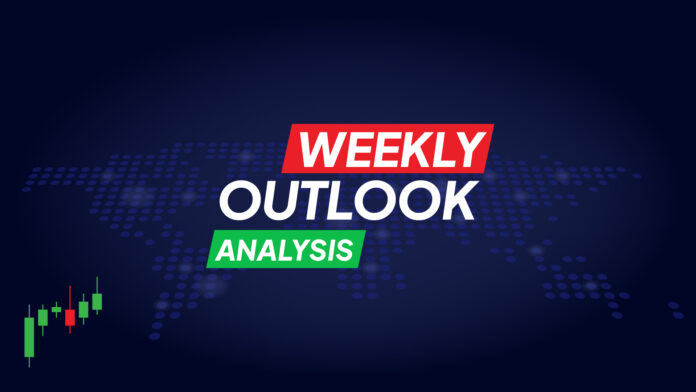Key points to watch out for:
- Investors see a good chance of another 50 basis point cut in November
- Fed, ISM PMI, and NFP to mark rate cut bets
- Eurozone CPI data awaited amid bets for more ECB cuts
- China PMI indices and BoJ sentiment summary in focus
Will the Fed Decide on a Back-to-Back 50 Basis Point Rate Cut?
Although the dollar declined right after the Federal Reserve decided to cut interest rates by 50 basis points, with further reductions expected for the remainder of the year, the currency traded in a consolidated manner last week. Market participants anticipate additional cuts of approximately 75 basis points for both November and December. According to Fed funds futures, there is nearly a 50% probability of a follow-up double rate cut at the November meeting today.
With policymakers Christopher Waller and Neel Kashkari advocating for slower reductions going forward, the current market outlook suggests potential upside risk if more officials share this view or if upcoming data supports it. Investors will also be listening closely to Fed members this week, as the dot plot serves as a relatively accurate guide to the Fed’s future moves. This week’s data, especially the Non-Farm Payrolls report on Friday, October 4, may attract significant attention.
ISM PMI and Non-Farm Payrolls to Capture Attention
Ahead of the payroll report, the ISM manufacturing and non-manufacturing PMIs for September, due on Tuesday, October 1, and Thursday, October 3, respectively, will be closely monitored for early indications of how the U.S. economy concluded the third quarter. If the figures align with Fed Chairman Jerome Powell’s recent assertion that the economy is in good shape, the dollar could strengthen as investors reassess the need for another bold rate cut.
For the dollar to maintain its gains, Friday’s employment report will need to show signs of improvement. Current estimates suggest the U.S. economy added 145,000 jobs in September, up slightly from 142,000 in August, with the unemployment rate remaining steady at 4.2%. Average hourly earnings are expected to slow modestly from 0.4% to 0.3% month-on-month.
While these estimates do not point to a game-changing report, positive surprises in the ISM numbers or less pessimistic commentary from Fed policymakers could set a constructive tone for the U.S. dollar. Wall Street could also rally on stronger economic data, even if it signals a slowdown in rate cuts, as it would indicate the U.S. economy is not headed toward a recession.
Eurozone Inflation Under the Spotlight at a Divided ECB
In the Eurozone, the focus will likely be on the preliminary CPI data for September, due on Tuesday, October 1. With recent PMI figures encouraging market participants to increase bets on a rate cut, the probability of a 25 basis point reduction at the European Central Bank’s October 17 meeting has risen to nearly 75%. However, a recent Reuters report highlighted division within the ECB, with some officials advocating for a pause while others push for a rate cut. A compromise may involve maintaining rates in October and lowering them in December if the data does not improve.
The market’s base case remains a rate cut in October and possibly December. Further signs of slowing inflation in the Eurozone could reinforce this view, potentially leading to a decline in the EUR/USD pair. A break below the 1.1000 level could confirm a double-top formation on the daily chart, signaling a further decline.
Will Chinese PMIs Indicate Contraction?
China’s official PMI for September will be released on Monday, September 30. In August, the composite PMI was at 50.1, barely above the threshold that separates expansion from contraction. It remains to be seen whether business activity improved or slipped into contraction territory. Last week, the People’s Bank of China introduced a series of stimulus measures to boost economic activity and support the real estate sector, but market reaction was muted.
Despite these measures, oil prices fell due to easing supply concerns from Libya and reports that Saudi Arabia is abandoning its $100 per barrel target. The Chinese measures did little to boost demand expectations in the world’s largest oil importer, as investors seem to expect further fiscal support. Weak PMI data could trigger additional selling pressure in oil prices. However, pullbacks in risk-linked currencies like the Australian dollar and New Zealand dollar may be limited as global risk appetite appears to have increased.
Summary of BoJ Views on the Agenda
In Japan, the Bank of Japan will release the summary of views from its latest meeting, where policymakers left interest rates unchanged but raised their assessment of consumption due to rising wages. Governor Ueda noted that they are prepared to raise rates further if the economy evolves as expected.
Investors will closely scrutinize the summary for signals of a potential rate hike before the end of the year. Japan’s August employment data, due on Tuesday, October 1, and the Tankan survey on Thursday, October 3, will help shape investor sentiment.



